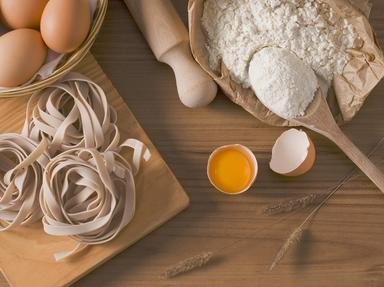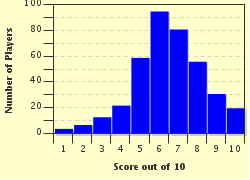Quiz Answer Key and Fun Facts
1. Zest, in a culinary context, is both a verb and a noun. In the bathroom context, it is a bar of soap! What is the meaning of this verb in cooking?
2. Chafing is not usually a good thing. Skin irritated by rubbing chafes. Annoying people chafe. A line on a sailboat worn by rubbing on a metal surface is chafed. What is a chafing dish?
3. Chef wants to serve a roasted pork tenderloin with glazed sweet onions. Which of the following onions is not considered "sweet"?
4. What do you add when the recipe calls for three cups of "tomato concassť"?
5. Water boils at 100 degrees Celsius or 212 degrees Fahrenheit under normal barometric pressure (30 in. Hg) at sea level. Denver, Colorado, is called the Mile High City because its altitude above sea level is 5280 feet (1609 meters). Assuming normal barometric pressure, at what temperature does water boil in Denver?
6. On "Saturday Night Live", Cheri Oteri played Nadine, a cashier at Burger Castle who repeatedly told her customers to "simmer down." Simmering has a very specific meaning in culinary terms. What does it mean?
7. Chinese five-spice powder adds a unique flavour to all manner of Chinese dishes. It is especially useful as a rub or in a marinade for meat, poultry and fish. Which of the following is a typical basic recipe for five-spice powder?
8. Chef asks you to cube a peeled potato. What should you do to it?
9. A visiting chef from Malaysia introduces a number of new foods, new flavours and new ways to cook. She then asks you "What is the difference between rendang and rambutan?"
10. Macbeth says, to an apparition of a king, "Thy crown does sear mine eye-balls" in Act IV of "The Tragedy of Macbeth." What does it mean when a cook sears an ingredient?
Source: Author
FatherSteve
This quiz was reviewed by FunTrivia editor
WesleyCrusher before going online.
Any errors found in FunTrivia content are routinely corrected through our feedback system.

